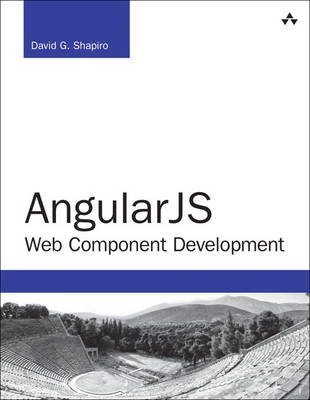
AngularJS Web Component Development
Building, Reusing and Exporting UI Components with AngularJS
Seiten
2016
Addison-Wesley Educational Publishers Inc (Verlag)
978-0-321-96910-1 (ISBN)
Addison-Wesley Educational Publishers Inc (Verlag)
978-0-321-96910-1 (ISBN)
- Titel wird leider nicht erscheinen
- Artikel merken
Today, thousands of large scale, single-page web applications have grown completely out of control. They don't scale. They perform poorly due to inadequate architectural foundations. Development teams find it increasingly difficult to work with them. In AngularJS Web Component Development, David G. Shapiro shows how to overcome all these challenges with the AngularJS JavaScript framework and component architecture.
Shapiro presents comprehensive front-end web development strategies built around realistic software user stories, use cases, and example implementations -- from simple to advanced. Rather than focusing solely on new development, he takes on the challenge most developers really face: how to salvage and improve existing applications and technology investments. Throughout, he draws on his own experience at TIBCO, where he has used AngularJS to architect and implement the cutting-edge Tibbr developer platform, APIs, and Social Plug-in components.
Shapiro's version-agnostic coverage is designed to anticipate and accommodate planned enhancements to the AngularJS feature set, so the book remains useful for years to come. For instance, this is the only guide that fully discusses the key role that AngularJS can play in supporting functional, test-driven development using W3C Web Components, the emerging standard for web UI component architecture.
Shapiro presents comprehensive front-end web development strategies built around realistic software user stories, use cases, and example implementations -- from simple to advanced. Rather than focusing solely on new development, he takes on the challenge most developers really face: how to salvage and improve existing applications and technology investments. Throughout, he draws on his own experience at TIBCO, where he has used AngularJS to architect and implement the cutting-edge Tibbr developer platform, APIs, and Social Plug-in components.
Shapiro's version-agnostic coverage is designed to anticipate and accommodate planned enhancements to the AngularJS feature set, so the book remains useful for years to come. For instance, this is the only guide that fully discusses the key role that AngularJS can play in supporting functional, test-driven development using W3C Web Components, the emerging standard for web UI component architecture.
Introduction
Part I. Architecture
1 Web UI Component Architecture and Design Patterns
2. AngularJS as a Component and MVVM Implementation
3. AngularJS Component Primer, Part One: Presentation Layer
4. AngularJS Component Primer, Part Two: Application Logic
Part II. Reusability
5. Creating a Reusable UI Widget for Your Application
6. Creating a Portable UI Container Component for Your UI Widgets
7. Embedding AngularJS Components inside Other Frameworks
Part III. Portability
8. Creating a Developer Framework
9. Exportable UI Plug-ins
10. Planning for W3C Web Components
Appendices:
A. AngularJS Resources
B. Web UI Architecture Resources
C. Legacy Browser Issues
D. Mobile Browser Support
| Erscheint lt. Verlag | 28.2.2016 |
|---|---|
| Verlagsort | New Jersey |
| Sprache | englisch |
| Maße | 178 x 229 mm |
| Themenwelt | Mathematik / Informatik ► Informatik ► Web / Internet |
| Informatik ► Weitere Themen ► Smartphones / Tablets | |
| ISBN-10 | 0-321-96910-3 / 0321969103 |
| ISBN-13 | 978-0-321-96910-1 / 9780321969101 |
| Zustand | Neuware |
| Informationen gemäß Produktsicherheitsverordnung (GPSR) | |
| Haben Sie eine Frage zum Produkt? |
Mehr entdecken
aus dem Bereich
aus dem Bereich
der schnelle Smartphone-Einstieg : für alle Pixel-, Nokia-, Motorola- …
Buch | Softcover (2023)
BILDNER Verlag
14,90 €


